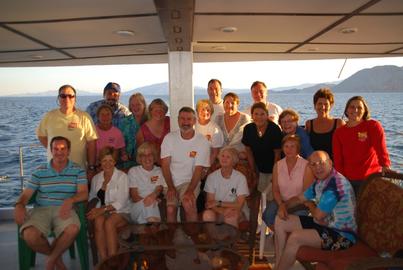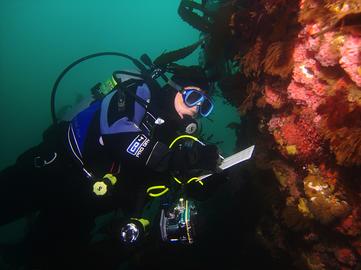”Great Annual Fish Count” Snorkel Trip - Tuesday, July 19th @ 11am
Don’t just blow bubbles - make your dives count.
Join the Barrier Island Center & Cocoa Beach Scuba Odyssey for the Great Annual Fish Count.
The event will include a free fish identification & survey methodology seminar.
The guided snorkel trip to the Sebastian Inlet has a fee.
Meet @ the BIC and come prepared with water, sunscreen, snacks, equipment, etc.
The fee to participate in dive is $22 and includes guide and survey materials.
The Fish Identification Network will hold the 11th Great Annual Fish Count on July 23, 2011 at the Kahekili Beach Park, West Maui, Hawaii.
- This is a SCUBA and/or snorkel survey rated beginner and intermediate.
- Fish identification and survey protocol will taught on the beach at 9 am.
- Loaner slates will be available.
- Novice quiz (level 2) will be held at 11 am and is free of charge.
Email to: maui.fin@gmail.com, or join FIN on Facebook:
We are honored to release the 2010 REEF Annual Report. The report is posted online at www.REEF.org/reef_files/annual2010.pdf.
REEF, Fish and Friends is a monthly seminar series co-sponsered by REEF and the Sanctuary Friends Foundation that revolves around marine life and Diving that Counts. Snorkelers, divers, and natural history buffs are invited to entertaining presentations by guest speakers, join informal discussions, and enjoy some laid-back, Keys-style fun with friends who share your passion.
REEF Environmental Education Foundation and the Sanctuary Friends Foundation of the Florida Keys welcomes Donna Blaszcak as the guest speaker for June's Fish and Friends event!
Click here for additional information and registry details!
Teams compete for cash prizes for most, largest, and smallest lionfish!
Click here for more information, including registry info, on REEF's Lionfish Derby webpage.
REEF is offering a lionfish workshop on June 15th at the Key Largo Library from 6:30 to about 8:00. All workshop participants will be eligible for a federal permit to collect lionfish, with nets or slurguns, from the no-take zones, the Sanctuary Preservation Areas (SPAs) in the FL Keys National Marine Sanctuary using nets. The permits will be issued a week or two following the workshop.
We are pleased to announce the 2012 REEF Field Survey trip schedule - check it out online at www.REEF.org/trips. We have an exciting lineup of destinations planned and we hope you will join us. These trips offer a great introduction to fish identification for novice fishwatchers, and are a fun way for experienced surveyors to build their life list while interacting with fellow fishwatchers. REEF staff, board members, and other REEF instructors lead these trips, and each features daily classroom seminars and a full diving schedule.
Every month, scientists, government agencies, and other groups request raw data from REEF’s Fish Survey Project database. Here is a sampling of who has asked for REEF data recently and what they are using it for:
-Researchers used data on yelloweye rockfish frequency of occurrence in the San Juan Islands in Washington to evaluate population status for the San Juan County Community Development and Planning Department.


